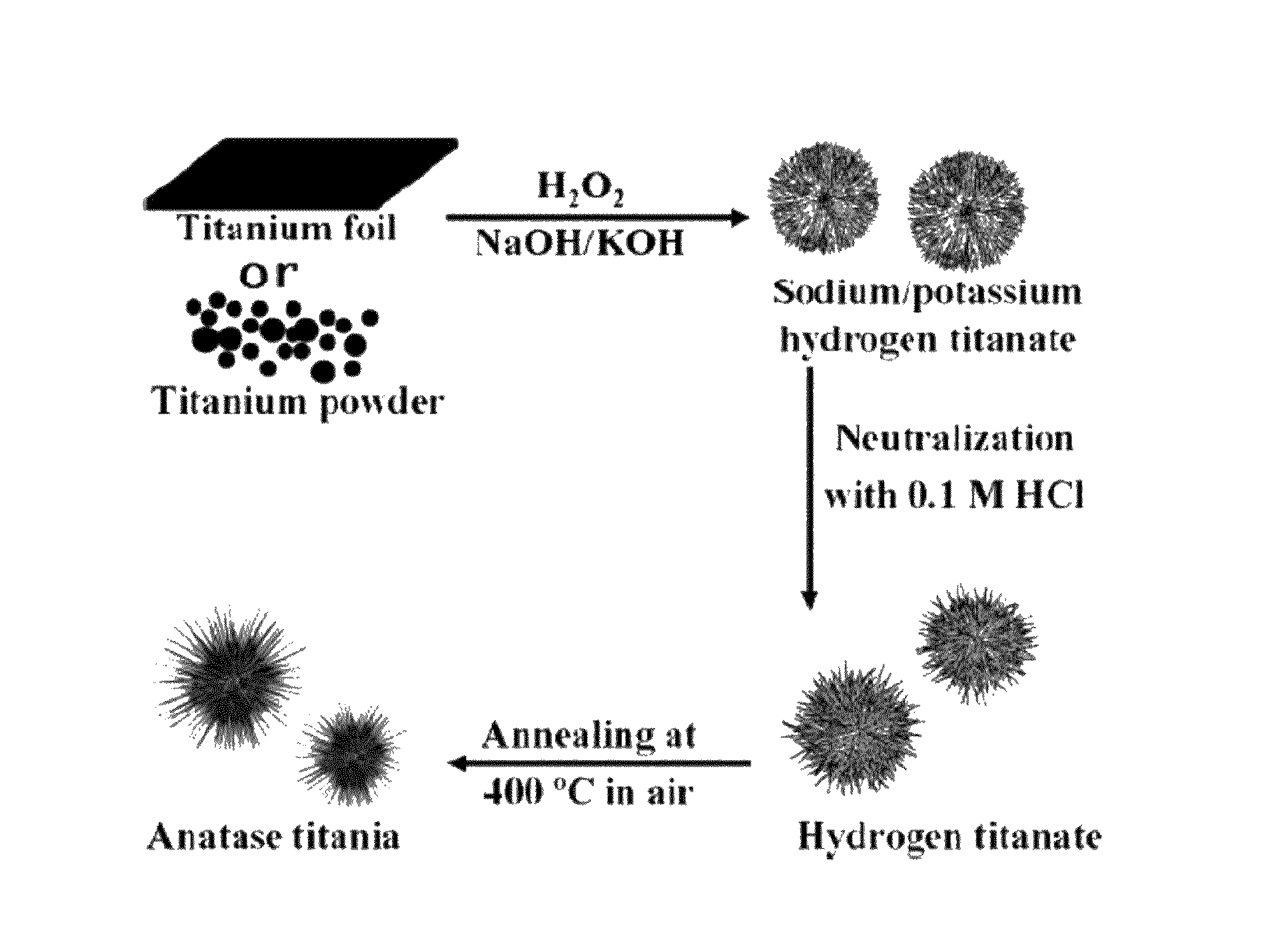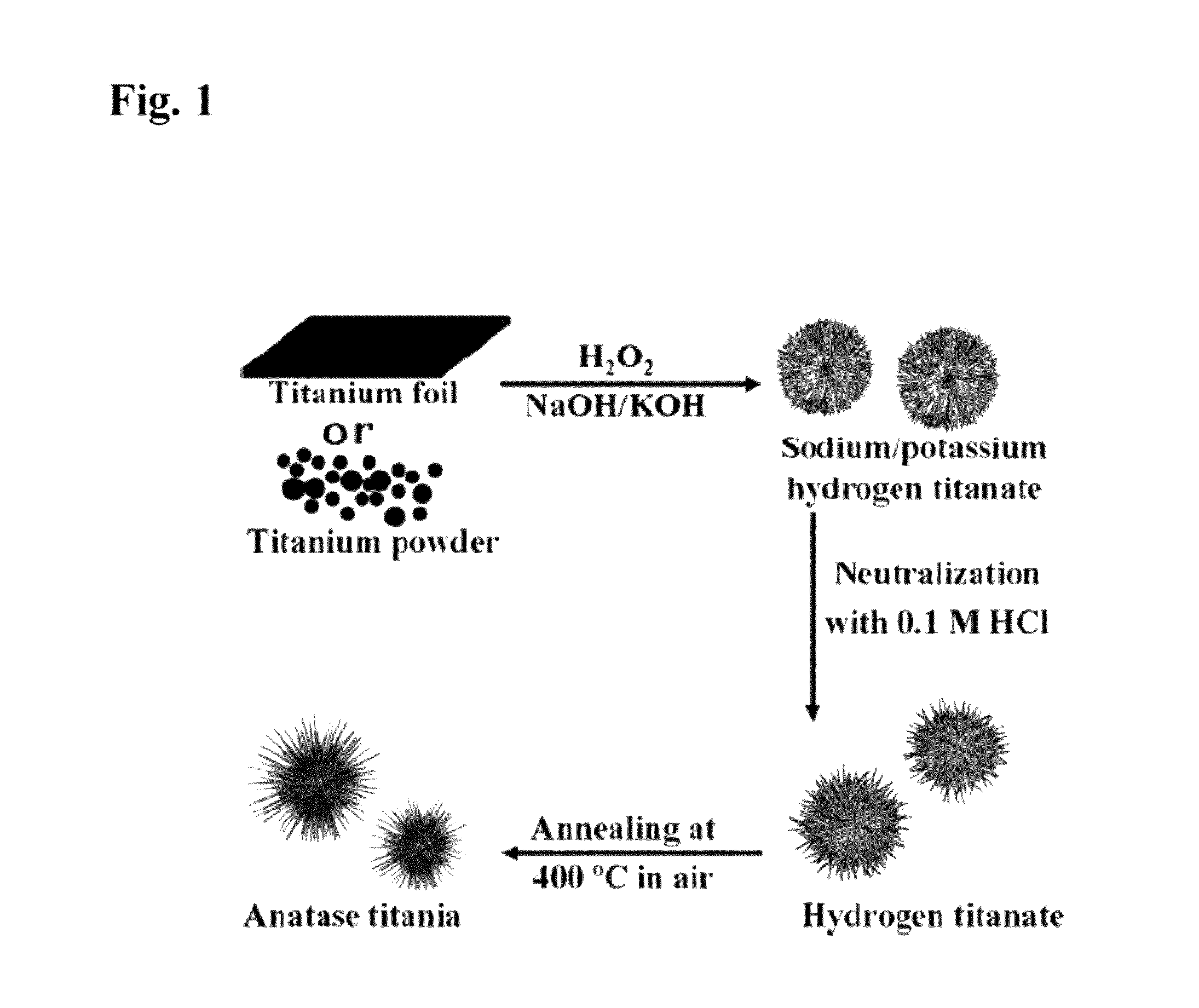Titanate and titania nanostructures and nanostructure assemblies, and methods of making same
a technology which is applied in the field of titania nanostructures and nanostructure assemblies, and methods of making same, can solve the problems of limited nanostructures, nanostructures, and nanostructures that cannot be synthesized efficiently, and diverse “bottom-up” strategies such as milling, imprinting, or etching techniques, can not achieve simultaneous control of nanoparticle structure, surface chemistry, monodispersity, and assembly. ,
- Summary
- Abstract
- Description
- Claims
- Application Information
AI Technical Summary
Benefits of technology
Problems solved by technology
Method used
Image
Examples
examples
Micrometer-Scale Spherical Aggregate Comprising Titanium
[0100]The examples describe an in situ organization of either sodium or potassium hydrogen titanate one-dimensional (1D) nanostructures, measuring several hundreds of nanometers in length and up to several nanometers in diameter, into hollow micrometer-scale spherical aggregates or sea-urchin-like structures, under a variety of reaction conditions (including temperature variations). These hierarchical structures have been produced using a general redox strategy combined with a hydrothermal reaction involving a titanium source (e.g., either Ti foil or Ti powder), a basic NaOH or KOH solution, and an oxidizing H2O2 solution. Large quantities of discrete sea-urchin-like structures of both titanate and titania 1D nanostructures are generated in different reaction media, including in solution and on the surfaces of Ti reagent foils and powders.
[0101]Three-dimensional (3D) dendritic assemblies of (a) potassium hydrogen titanate, (b) ...
PUM
| Property | Measurement | Unit |
|---|---|---|
| diameter | aaaaa | aaaaa |
| diameter | aaaaa | aaaaa |
| diameter | aaaaa | aaaaa |
Abstract
Description
Claims
Application Information
 Login to View More
Login to View More - R&D
- Intellectual Property
- Life Sciences
- Materials
- Tech Scout
- Unparalleled Data Quality
- Higher Quality Content
- 60% Fewer Hallucinations
Browse by: Latest US Patents, China's latest patents, Technical Efficacy Thesaurus, Application Domain, Technology Topic, Popular Technical Reports.
© 2025 PatSnap. All rights reserved.Legal|Privacy policy|Modern Slavery Act Transparency Statement|Sitemap|About US| Contact US: help@patsnap.com



